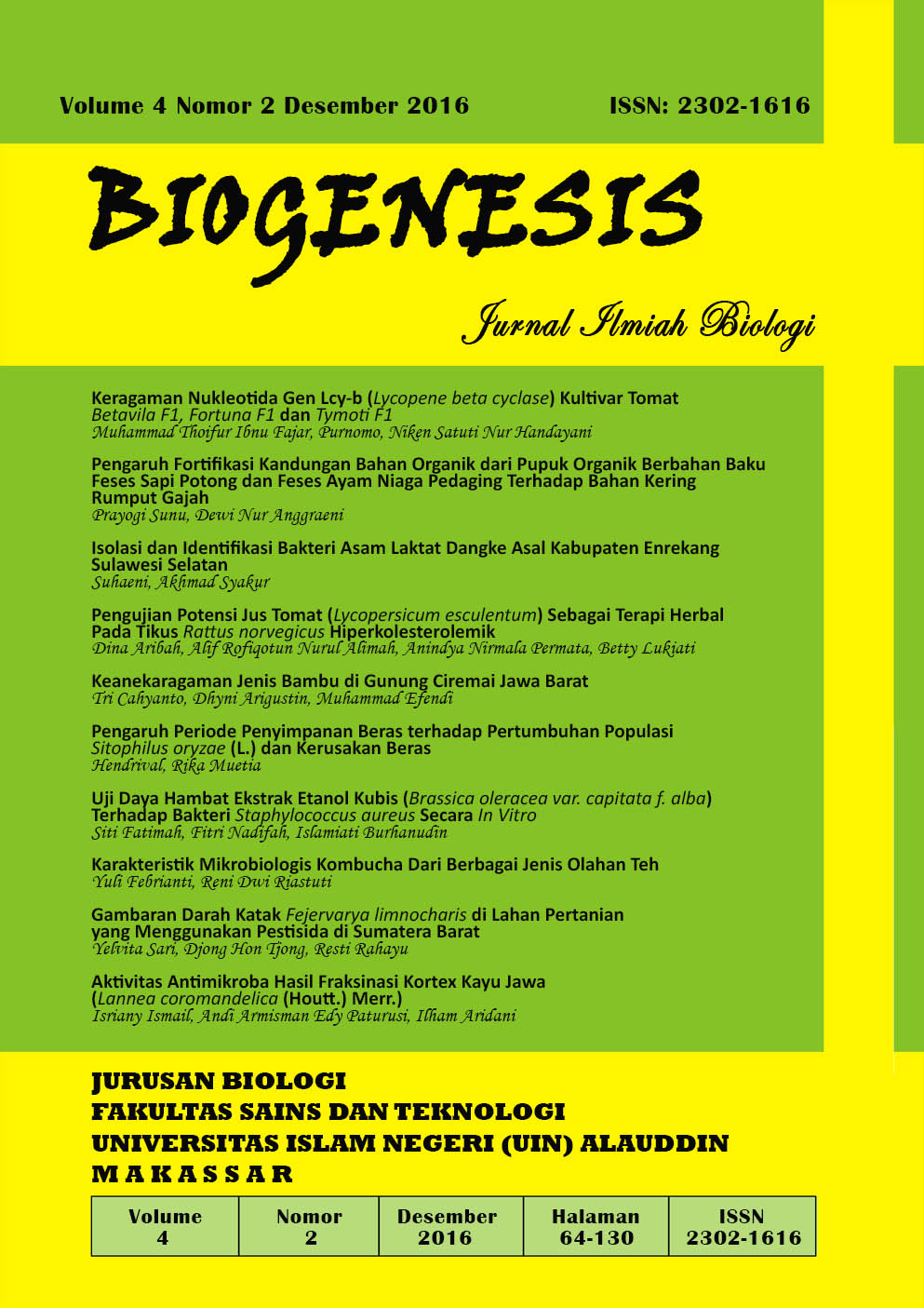Karakteristik Mikrobiologis Kombucha Dari Berbagai Jenis Olahan Teh
Abstrak
This research aimed to analyze microbiological characteristics of kombucha from various types of tea processing which tasty to drink and gave benefits to examine some types of diseases. This research used an experimental method. The kombucha microbiology of old and new colonies were analyzed quantitatively descriptive by Levene homogeneity test, Kolmogorov-Smirnov normality test, and Shapiro-Wilk test. It was continued by Kruskal-Wallis and Mann-Whitney test. The results of data analysis were the average thickness, wet weight and diameter by using Kruskal-Wallis test that the provision of various types of processed tea was significantly different with the wet weight (0.222 < 0.05) but it was not significantly different to the thickness (0.170 > 0.05) and diameter (0.637 > 0.05) the old kombucha colony. Furthermore, Mann-Whitney test obtained was significant (p-value) > 0.05. It was showed that it was not significantly different to the average data wet weight of old kombucha colony. In addition, It was significantly different to various type of tea processing to the thickness (0.015 < 0.05) fresh weight (0.017 < 0.05), diameter (0.046 < 0.05), and the sheet (0.042 < 0.05) new kombucha colony. Furthermore, Mann-Whitney test obtained was significant (p-value) > 0.05. It means that it was not significantly effective to the average data of thickness, wet weight, diameter, sheet new kombucha colonies. The best treatment was administrating of green tea (P3) in the old and new kombucha colonies were significantly different from other treatments.
##submission.copyrightStatement##
##submission.license.cc.by4.footer##COPYRIGHT AND LICENSE STATEMENT
COPYRIGHT
Biogenesis: Jurnal Ilmiah Biologi is published under the terms of the Creative Commons Attribution license. Authors hold the copyright and retain publishing rights without restriction to their work. Users may read, download, copy, distribute, and print the work in any medium, provided the original work is properly cited.
LICENSE TO PUBLISH
1. License
The use of the article will be governed by the Creative Commons Attribution license as currently displayed on http://creativecommons.org/licenses/by/4.0.
2. Author’s Warranties
The author warrants that the article is original, written by stated author/s, has not been published before, contains no unlawful statements, does not infringe the rights of others, is subject to copyright that is vested exclusively in the author and free of any third party rights, and that any necessary written permissions to quote from other sources have been obtained by the author(s).
3. User Rights
Under the Creative Commons Attribution license, the users are free to download, reuse, reprint, modify, distribute and/or copy the content for any purpose, even commercially, as long as the original authors and source are cited. No permission is required from the authors or the publishers.
4. Co-Authorship
If the article was prepared jointly with other authors, the corresponding author warrants that he/she has been authorized by all co-authors, and agrees to inform his/her co-authors of the terms of this statement.
5. Miscellaneous
Biogenesis: Jurnal Ilmiah Biologi may conform the article to a style of punctuation, spelling, capitalization, and usage that it deems appropriate. The author acknowledges that the article may be published so that it will be publicly accessible and such access will be free of charge for the readers.


